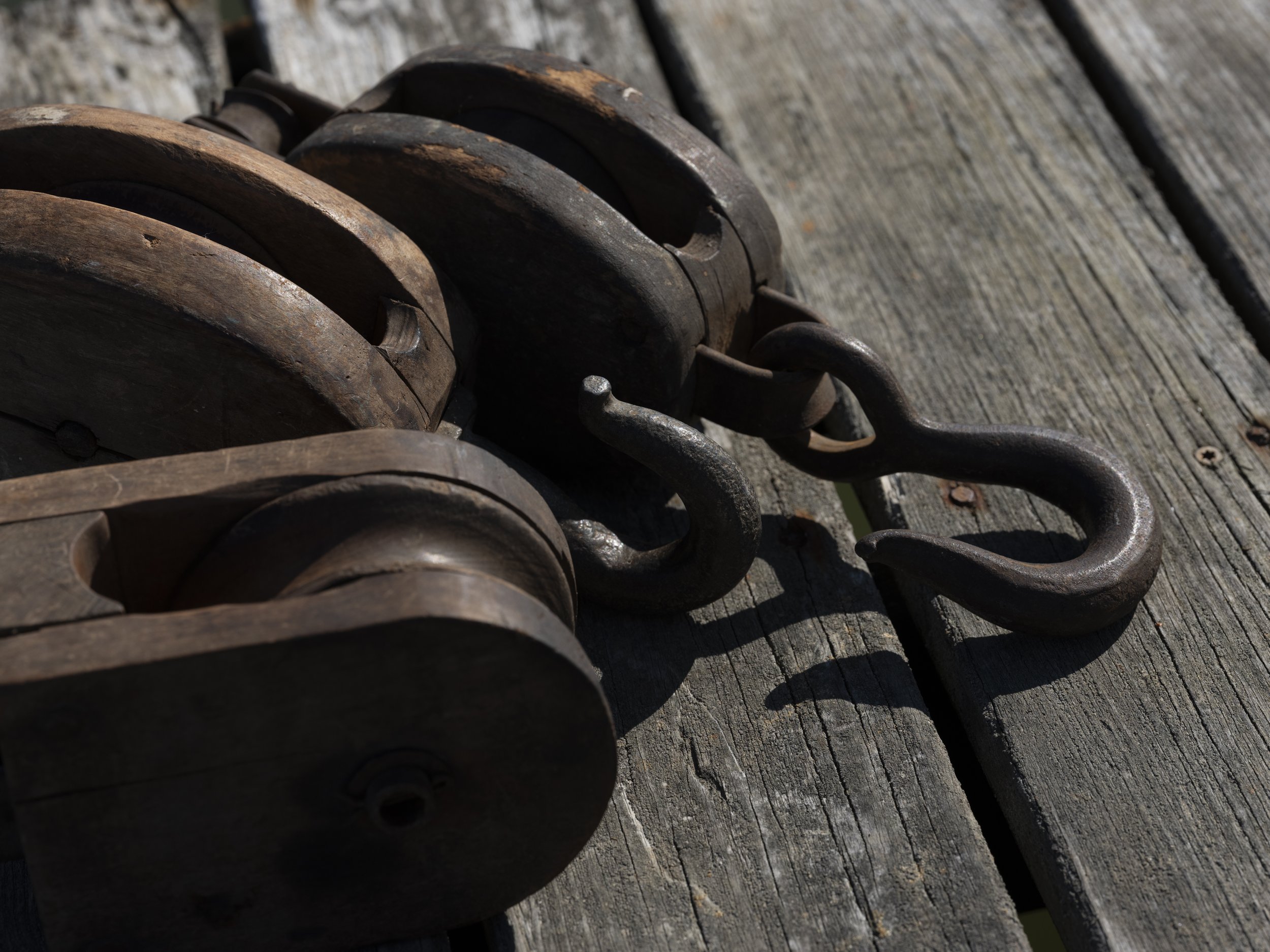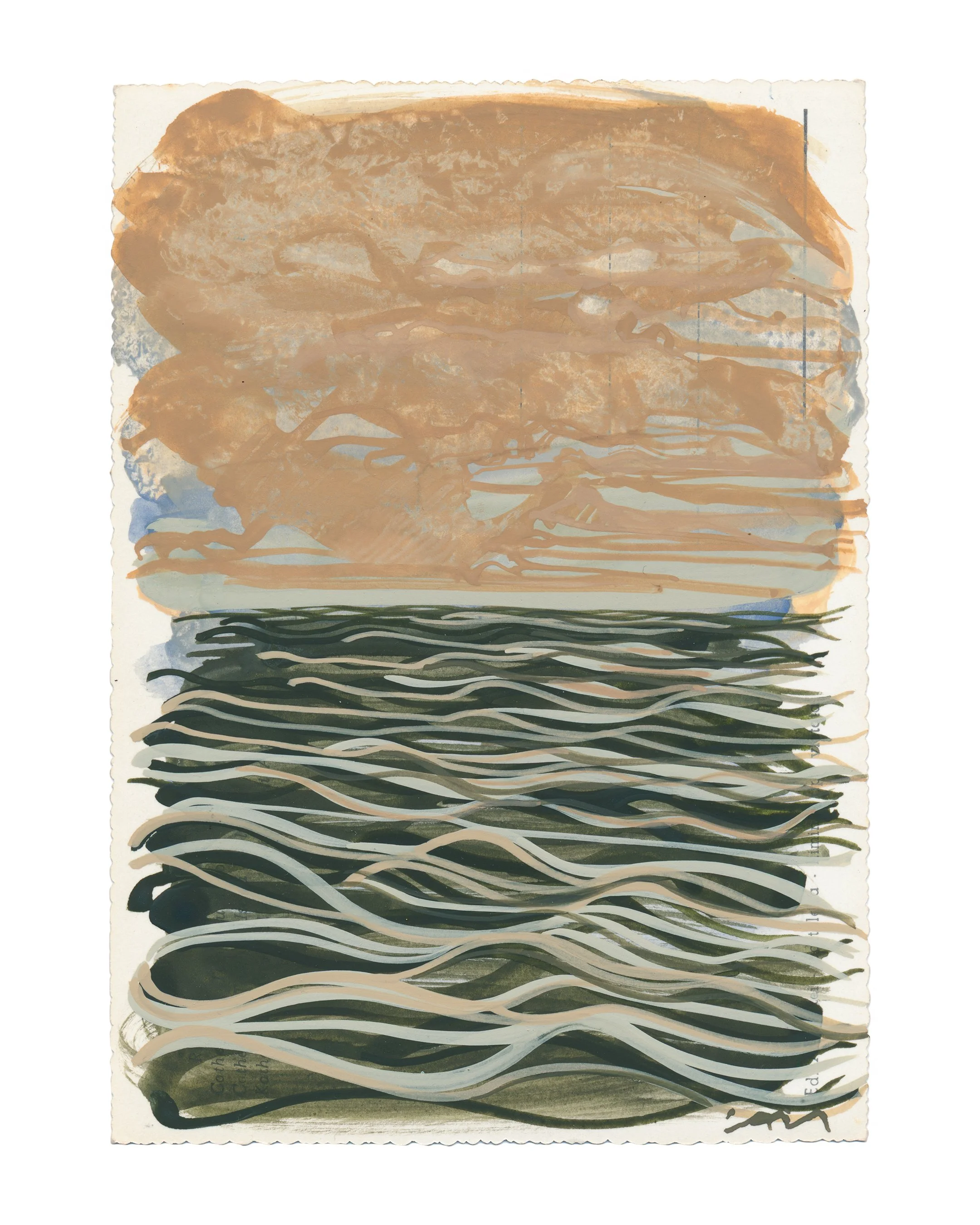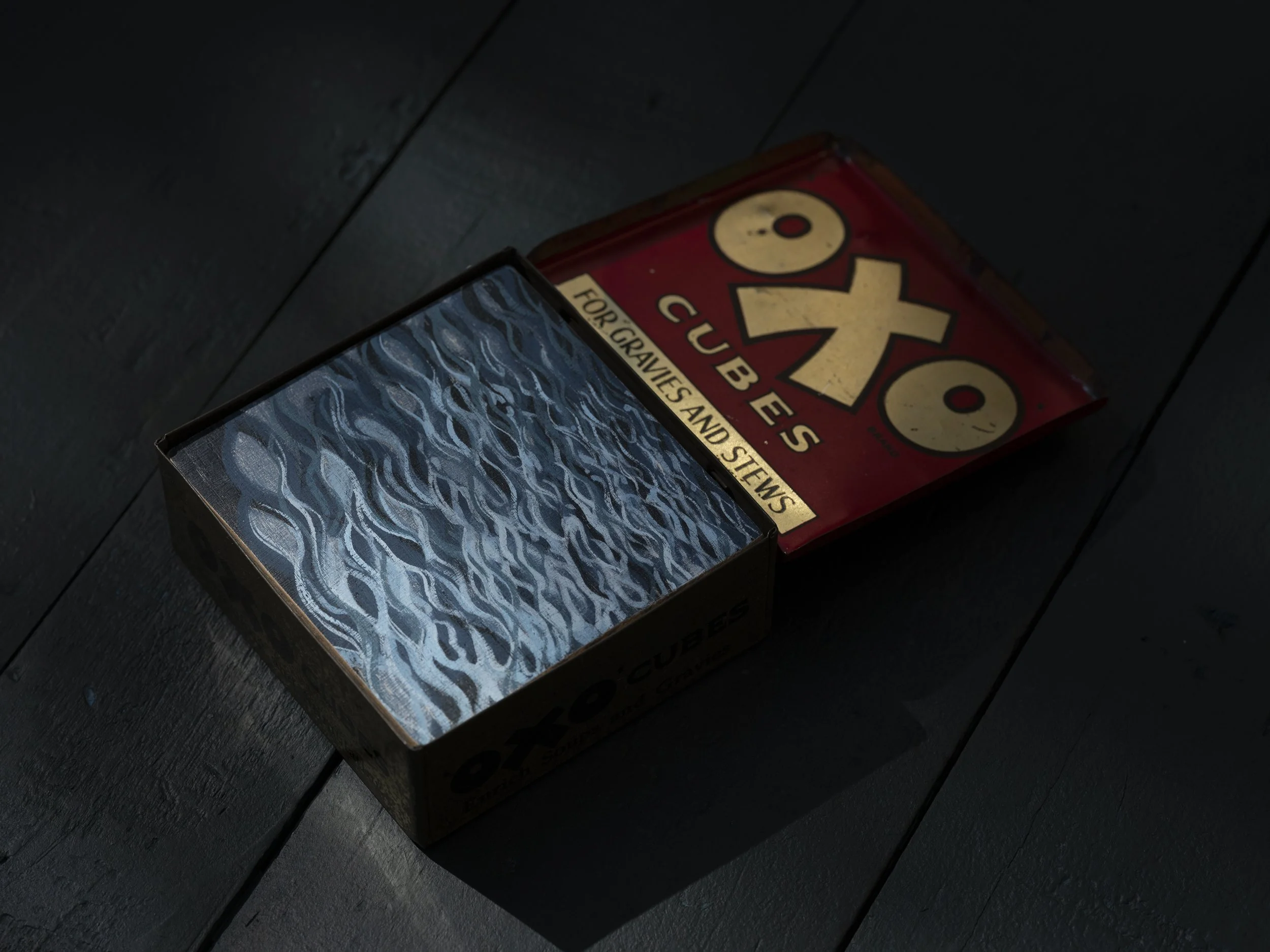
POSTCARD
Early in my career I began grouping objects; hunting down items at flea markets and antique shops to build collections. I rarely paint one-off pieces, preferring to add to ongoing and clearly grouped sets: stamps, matchboxes, postcards, pulleys, tins, doors... This way, the objects hold a more important place; one is more attuned to the differences and details within each set.
STAMP
Though titled Stamps, this ongoing series is in fact formed of various flat-bottomed wooden objects, from decorator’s tools to decorative corbels. I found the first of them in London in 2023 and have hunted others down ever since. Their titles reference the location they were originally sourced. Each describes sea surface in oil, upon layers of sanded plaster, offering interesting edge-details. These works can be displayed on shelves or mantles, or affixed to the wall with pins or magnets.
Recent Gathering

Every artwork on this webpage is made from reclaimed, recycled materials – usually of a functional nature. The banner image above features wooden marine pulleys found in the antiques barns of New England, photographed before transformation. The below slideshow carries images from flea markets in France and Belgium, visited this year and last. More recent gathering images can be found on my blog, alongside photographs of the journey.
CONTAINER
TIN
Tins have been a favourite item in the studio since 2017. My first set was exhibited in Rising Horizon in 2019, each named for a different sea. By 2020 I had amassed a large collection of tins, which became my principal focus during lockdown in 2020 & 21. Working from a small studio, these hand-held antique vessels became a daily ritual. By the end of lockdown and after a move to a larger studio (by the sea) I had set myself a goal the painting 365 of them – one for each day of the year. I completed the series in 2022 and exhibited them at Venice Biennale. Today, sixty-five of that original series remain, now back in the studio after exhibitions around the UK and further afield.
These miniatures pay homage to the sea. They speak of time past, present and future; of function and the daily coming and going of the tide. These fleeting moments come together to describe a bigger picture, a collective memory. “Each painting contains a different body of water, where the horizon line, time of day, and weather conditions vary in every unique view”, writes Kate Reeve-Edwards. “The painting process reacts and enhances the objects, working with them to create a new life. A circular ecosystem of reuse and repair is what Cass is gently encouraging. The hand-held world of the tin is regenerated: these small objects which once contained tobacco, mints, or teabags now convey new, bigger ideas...”
Framed in walnut, printed onto pro-pearl papers | Panthalassa was the super-ocean that surrounded the super-continent Pangaea, until the landmass began to break up around 250 million years ago. As a title for this series of photographs, Panthalassa (from the Greek πᾶν “all” and θάλασσα “sea”) is used to enforce the notion that these are each captures of the same ocean: our World Ocean. Spanning twelve years (and counting) these photographs have been taken as research (for painting projects), during material gathering trips, and from my previous sea-facing studio. They link to The Sea from Here, and other works exploring climate change and specifically variations in sea-level rise.




















































